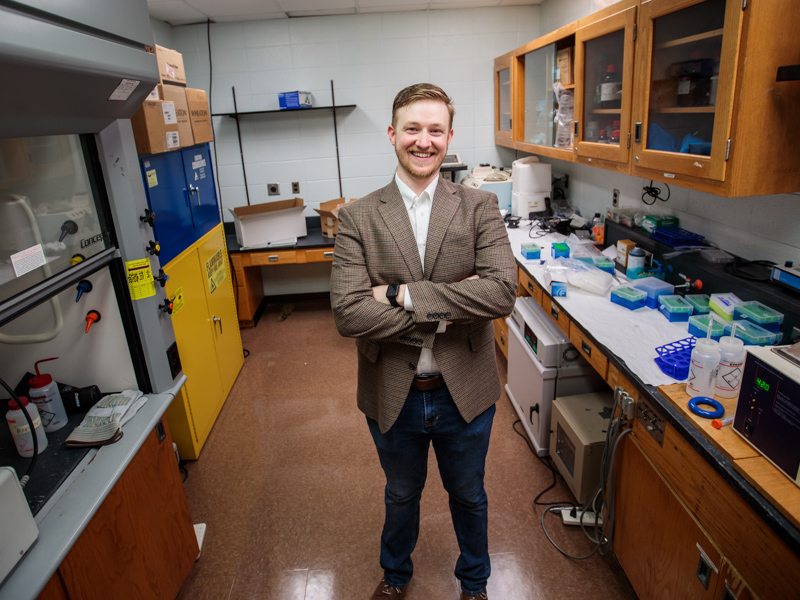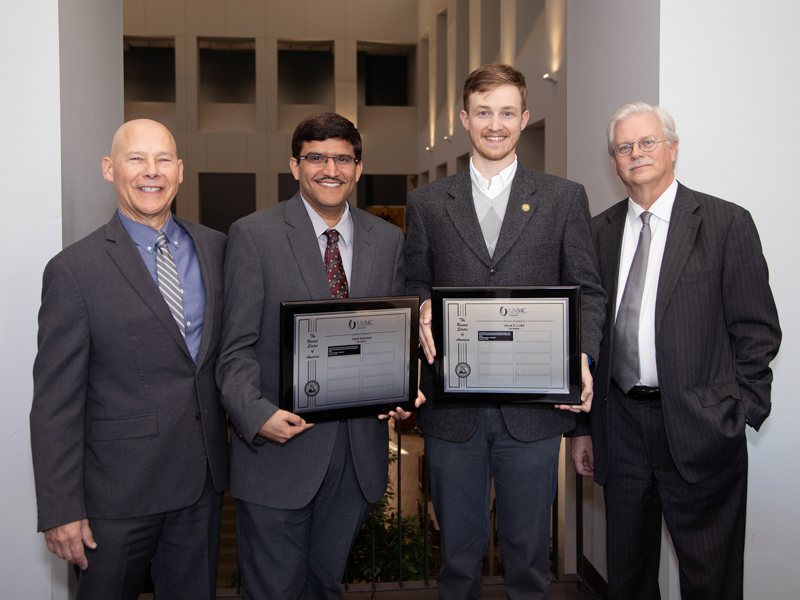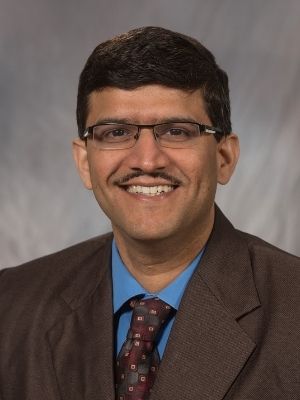#UMMCGrad2021: Innovation abounds for SGSHS graduate

In materials science, polymers are about as diverse a class as can be. Some are natural and elastic, like wool; others tough and synthetic, like PVC. Polymers can warm us, house us, entertain us and heal us.
It’s fitting that Jared Cobb’s research projects at the University of Mississippi Medical Center were as diverse as the materials he studied. With a PhD in Biomedical Materials Science from the School of Graduate Studies in the Health Sciences, he’s already using his skills in the workforce.
Then again, Cobb almost didn’t go to graduate school at all. His polymer science degree from the University of Southern Mississippi prepared him to do research for a private company. But Meredith Cobb – UMMC MD/PhD student and Jared’s wife – encouraged him to apply after meeting with SGSHS faculty during her orientation.
“Meredith said, ‘you have to meet this professor, you would really like him,’” Jared Cobb said. “So I did, and I thought, ‘This guy is awesome, and I want to work with him.’”
That professor was Dr. Amol Janorkar, now chair of the Department of Biomedical Materials Science. His laboratory does research at the intersection of engineering and chemistry using elastin-like polypeptides, or ELP. These polymers, based on the structure of the ubiquitous protein in its name, have profound potential for use in drug delivery, tissue engineering and more-biologically relevant in vitro experiments.

While the lab’s work focuses primarily on using ELP for human applications, Cobb saw an opportunity to apply the technology to a buzzworthy cause.
“I went to Dr. Janorkar’s office one day and told him that I thought I had come up with an idea for a research project: drug delivery for bees,” Cobb said.
Scientists think the invasive Varroa mite parasite is involved in about 70 percent of U.S. honeybee colony losses. With bees responsible for pollinating more than 90 fruit, vegetable and grain crops that make up one-third of the American diet, bee health is human health.
However, Cobb said, current methods for Varroa control are also toxic to bees. Cobb’s idea was to find a way to use non-toxic ELP technology to target anti-parasitic drugs directly to the mites.
Janorkar recalls looking at Cobb “like he was a little bit crazy.” However, Janorkar felt confident that if his student could secure funding, he could make the project happen.

“He’s always coming up with new projects and new ideas and he’s able to execute them quickly and to completion,” Janorkar said. “And that’s what sets him apart.”
Cobb applied for and received a grant and fellowship from the United States Department of Agriculture to pursue the project. He and Janorkar also found collaborators at Mississippi State University who were also interested in the application.
“We were able to design particle for testing and monitor drug release and were able to get some of this work published,” Cobb said.
It’s just one reason why Janorkar describes his former student as “innovative”. The United States Patent and Trade Office also noted that quality as well. Cobb is the co-inventor on a provisional patent application, along with Janorkar, Dr. John Correia, professor of cell and molecular biology, and SGSHS alumna Dr. Valeria Zai-Rose.
In brief, Cobb and colleagues “developed a way to use a surface to form ELP particle instead of a [liquid] solution. Whit this method, we can control particle size by controlling salt and pH,” he said. This expands the toolkit scientists have for creating ELP-based therapeutics, a research area where UMMC scientistsexcel.
The interacting effects of hundreds of parameters affect how ELPs form. Scientists can work out the expected results beforehand, but those are slow, hard calculations for a human to do. For another part of his dissertation research, Cobb learned a new skill to help solve this challenge.
“One day he came to me and said he wanted to learn more about computer programming and machine learning because that’s where the field of polymer science is going,” Janorkar said. “So, I told him to make it an important part of the dissertation.”
Cobb has published two papers so far applying machine learning to ELP, devising ways to determine optimal conditions for controlling properties like size and transition temperature.
As he wrapped up his dissertation in 2020, Cobb shifted gears to apply some of what he learned to the COVID-19 pandemic. He used machine learning to examine the effects of the earliest shelter-in-place orders issued in the United States. The results predicted slower growth of case in areas with shelter-in-place orders, as other studies have confirmed.
Beyond the science and engineering, Cobb improved organization and mentorship at UMMC. He had mentored junior lab members at USM, but the School of Dentistry’s summer UPSTART (Undergraduate and Professional Student Training in Advanced Research Techniques) and SGSHS’s SURE (Summer Undergraduate Research Experience) program provided even more opportunities.
One summer, Janorkar and Cobb took on several students, which can make it challenging to create an enriching and productive environment for everyone in the laboratory. However, Cobb made it work.
“I planned out projects, gave them a roadmap for every step, taught them how to use the instruments and set the expectations for the summer up front and very clearly,” he said. “We also set up weekly meetings with the students so they could present on their research progress and prepare the final summer presentations as they went along.”
Because of that level of organization, Cobb said “at least three or four of those students were authors on publications,” an accomplishment he’s quite proud of.
The SGSHS is also quite proud to call Cobb one of their alumni, bestowing him with the Robert A. Mahaffey Award from the SGSHS. Named for a late graduate student, this highest honor recognizes not only exceptional research potential, but also character.
“[Cobb] is sincere and honest, and you can trust what he says,” Janorkar said.
Cobb finished his graduation requirements in summer 2020. Since then, he’s worked at the U.S. Army Corps of Engineers Engineering Research and Development Center in Vicksburg. Just like his time at UMMC, Cobb has been able to apply his knowledge to multiple projects, one on “physics-informed machine learning” and another that explores the use of polymers for biosensors. At home in Fondren, he keeps busy as well: he and Meredith have two daughters: Elizabeth, 4, and Montgomery, 8 months.
The key to success in graduate school? Cobb says some of the best advice for he has is to find a supportive mentor and attempt new projects, but also to recognize when your energy might be better spent elsewhere.
“You can try a project for a month and if it works, great. If not move on to a new task,” Cobb said. “Go accomplish something else.”


